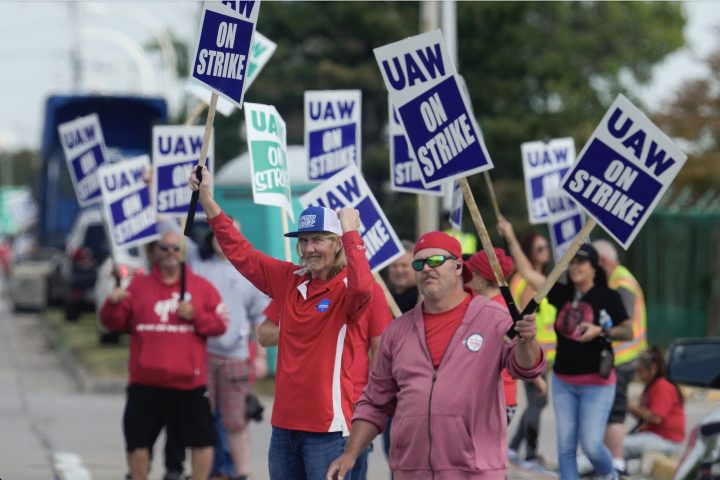
In one of the most striking repudiations yet of the Biden administration’s irrational business, economic, and energy policies, the United Auto Workers has announced a major walkout, targeting for the first time ever all three of the “Big 3” American automakers at the same time. The strike is so far limited to three facilities, a GM assembly plant in Missouri, a Ford plant in Michigan, and a Jeep plant in Ohio run by Stellantis, the parent company of Chrysler. Only about 13,000 out of the total 146,000 workers at the three companies are on strike, but more may walk out if the union’s terms are not met.
At issue are the continued low wages and benefits offered autoworkers — even as their employers rake in record profits, thanks in no small measure to largesse from the Biden administration, which has been funding a hoped-for transition from gas-powered to electric vehicles. At the end of August, for example, the Biden Administration announced that $12 billion in taxpayer dollars would be showered on the auto industry, along with $3.5 billion to battery manufacturers, in order to expedite the planned obsolescence of gas-powered vehicles and the factories that produce them. Yet somehow these monies, and previous such unlooked-for giveaways, have failed to trickle down to the people who actually make the cars. This, in a nutshell, is the UAW’s beef.
The UAW, being a wholly owned subsidiary of the Democratic Party, is not objecting to the radical Left Democrat agenda item of ending the production of gas-powered vehicles; they’re just upset that their workers are unequal partners with government and corporate leaders in the sellout. As the Wall Street Journal’s coverage put it, “UAW leaders want to secure the union’s place in the dawning electric-vehicle age, and assure that unionized workers fill the dozens of new battery and EV assembly plants that are springing up from tracts of farmland in Tennessee, Indiana and elsewhere.”
At the same time, corporate leaders at the Big 3 are insisting that the forced transition from gas-powered to electric vehicles is straining their resources. According to the AP’s Tom Krisher, Mike Householder, and John Seewer:
Automakers say they’re facing unprecedented demands as they develop and build new electric vehicles while at the same time making gas-powered cars, SUVs and trucks to pay the bills. They’re worried labor costs will rise so much that they’ll have to price their cars above those sold by foreign automakers with U.S. factories.
Quite. No one in the corridors of power in the UAW, the auto companies, or the Biden Administration has yet connected the dots, at least publicly. But it’s a good bet that many of the actual striking workers — the people who continue to build and drive those wildly popular gas guzzling cash cows — know exactly who’s to blame.



